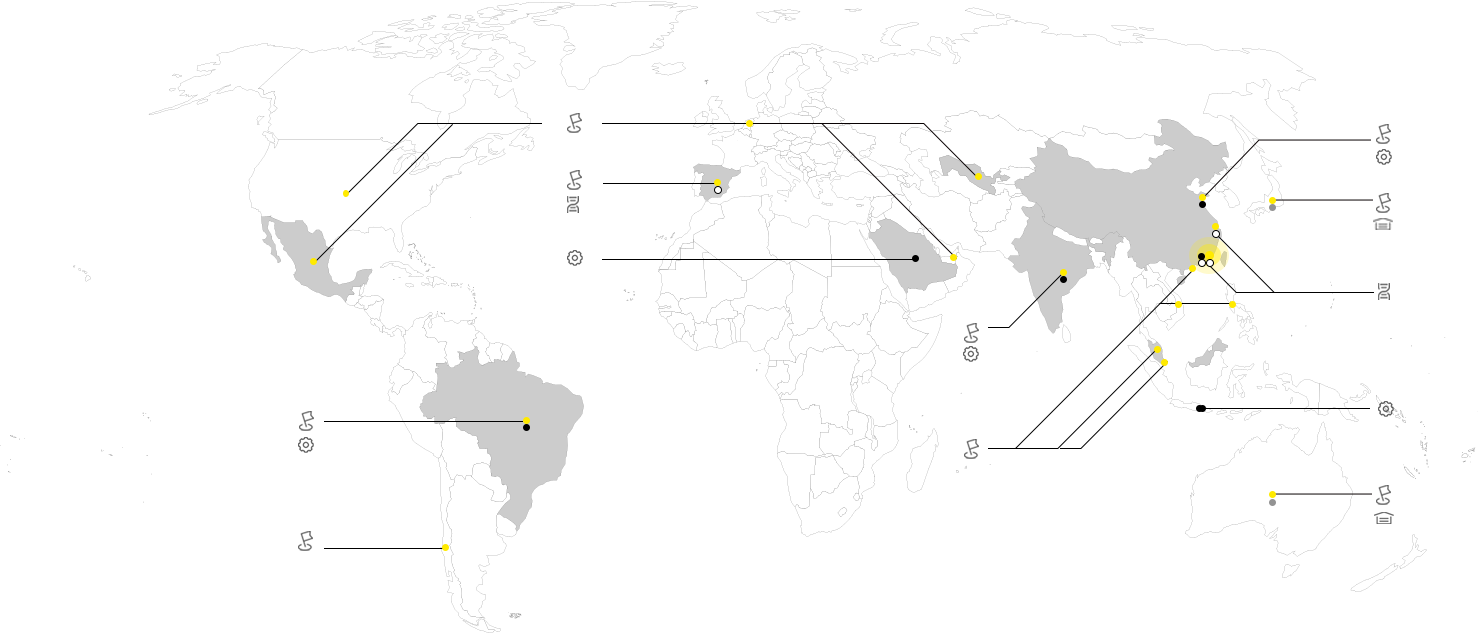
1.What is the future scope of the dual-axis solar tracker?
>
Dual-axis solar trackers have a bright future as technology keeps getting better. Smart features, such as IoE, can help the system adjust to weather conditions, identify and resolve issues before they occur, and operate more efficiently on its own. Moreover, new materials are making these trackers lighter, stronger, cheaper, and easier to install.
2.Can solar Solar Sunflowers be customized?
>
Yes, this product can be customized to meet your specific needs. We offer a variety of add-ons, including security monitoring, logo application, and Bluetooth systems, and we can adapt many other specifications upon request
3.How do solar tracking systems perform in different climates?
>
Solar Sunflowers are designed to operate across a wide range of temperatures and are built with corrosion-resistant materials. They use automated stow strategies to protect against high winds and snow loads, making them adaptable to diverse climates from hot deserts to colder, snowy regions.
4.What are the rotation angles for dual-axis trackers?
>
Dual-axis trackers typically offer a wide range of motion. The azimuth (east-west) rotation is often close to 360 degrees, while the elevation (tilt) angle can typically move from horizontal (0°) to nearly vertical (90°). The exact range is model-specific.
5.What is the typical installation timeframe for a Solar Sunflower?
>
Solar Sunflower systems are designed for quick installation, after site preparation and foundation curing, the unit can typically be installed and commissioned in a matter of hours or a day.
6.What land area is required for a Solar Sunflower installation?
>
The system requires a relatively small footprint for its foundation, but it needs a clear, circular area around it to allow the petals to unfold and track without obstruction. The specific radius required is listed on the product's data-sheet.
7.How much more efficient are Solar Sunflower systems vs fixed panels?
>
The energy production increase around 30-40% for dual-axis trackers when it is compared to fixed or fixed-tilt systems. The actual increase depends heavily on the geographic location (specifically the DNI), local weather conditions, and site characteristics.
8.Typical power output range for Solar Sunflower systems?
>
Solar Sunflower systems are typically marketed with a rated power output in the range of a few kilowatts (1kW/1.2kW - 2kW/2.4kW - 3kW) per unit, suitable for residential or small commercial applications. The exact power rating depends on the specific model and the modules used.(Always check the product data-sheet.)
9.How does dual-axis solar tracking increase energy production?
>
By tracking the sun on two axes (azimuth and elevation), the system keeps the solar panels at a near-optimal angle to the sun's rays throughout the day and year. This significantly increases energy yield compared to a fixed-tilt system, especially in locations with high direct normal irradiance (DNI).
10.What is a Solar Sunflower system and how does it work?
>
The photovoltaic Solar Sunflower is a movable and adjustable energy storage system. Using the global positioning tracking algorithm,it can track the sun's path throughout the day. It integrates an inverter and monitoring, with some models offering battery storage and additional options.
10
共1页 10条
共1页 10条
共1页 10条
